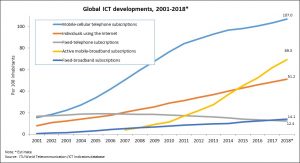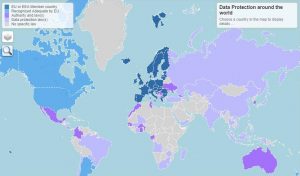Nosocomial transmission of Ebola still unacceptably high in the Democratic Republic of Congo, says WHO Emergency Health DG Dr Michael Ryan.
Aware of the importance of infection prevention and control, (IPC), the WHO has decided to place IPC as a tripartite AMR - UHC - EH priority, said Ryan at a public event in Geneva.
Ryan stressed that armed attacks come from outside terror groups and that the population welcomed the international teams as shown by the high rate of vaccine acceptance 70%!
A large number of anthropologists have studied the approach of the authorities (such as the Army death camps in Sierra Leone) and question the top down approach, pointing out that better outcome in Ebola control are achieved when people are equipped with home care: bleach, boots and gloves

By Garance Fannie Upham
Vice-President, ACdeBMR / WAAAR World Alliance Against Antibiotic Resistance
co-Editor in Chief, AMR Control 2015, 2016 and 2017 AMR Control 2018 or full book 2018
Chief Editor AMR-Times E-journal and subscription E_newsletter
EBOLA in the Congo: Still a Horrifically High Level of Nosocomial Infections, Reports WHO HE Director
Infection Prevention and Control: Top for AMR-UHC-Health Emergencies Agenda!
The views expressed below are those of the Author and do not engage her Board or the WAAAR
The World Health Organization has now placed Infection Prevention and Control (IPC) as a tripartite priority which brings together the Departments of Antimicrobial Resistance (AMR), that of Universal Health Coverage (UHC) and of Health Emergencies (HE), stated Dr Mike Ryan, WHO Director for Health Emergencies, in a public event on Ebola, at the Graduate Institute on May 13th.
WHO needs be congratulated on an initiative which could save millions of babies and women every year!
We had anticipated this move by the WHO, with the choice in the creation of an ADG (Assistant Director General) for Antimicrobial Resistance, and the nomination of the fierce Dr Hanan Balkhy, a world authority on IPC and leader in her country’s fight against MERS cov, this Middle East Respiratory Syndrom coronavirus, being a major nosocomial threat, not just in Saudi Arabia but also in South Korea, the later having spent several hundred million dollars in IPC to stop the MERS outbreaks.
We could only wish international donors had spent a few millions on IPC in West Africa after the Ebola outbreak, instead of leaving the three Western States Health systems even more desolate after the 2014-15 Ebola than they were before!
Dr Ryan had shaken the WHO Executive Board (EB) with his revelations last January 28 that “86 % of Ebola cases in the town of Beni, DR Congo, were acquired nosocomially”.
Last fall, Dr Peter Salama, previous ADG HE and now moved to the UHC Department, had first spoken from Congo’s Ebola centers on the fact that poorly kept health centers were “spreading” that hemorrhagic fever disease.
We also noted with interest the coming of ECDC (European Centre for Disease Prevention and Control)’s Dr Alessandro Cassini to the WHO IPC group (under Dr Allegranzi), as Dr Cassini had been lead author of the Lancet ID article last fall pointing out that even in the EU/ Euro zone, 426 000 AMR infections were Hospital Acquired Infections.
At the Graduate Institute
The Graduate Global Health Center event, organized and chaired by the Director Michaela Told, was remarkably thought provoking.
Basically the event addressed all the right questions: what is the best way to approach a population affected with a dangerous pathogen outbreak? What are the dangers of a militarized approach? How not to play electoral politics in an epidemic situation (preventing Ebola region populations from voting, for example), if you don’t want a dangerous disease to spread further? How to engage with local populations and start from their capacities instead of sweeping down on them? Can home care work?
What can be the role of Imams and local chiefs? How the terror striking health care workers is commanded from the outside (by whom? Who provides the weapons and why?): an unanswered question.
The event started with the London School of Hygiene and Tropical Disease, Pr Susannah Mayhew, Dept for Global Health and Development; Principal Investigator, ‘Ebola Gbalo Research Project’ (conducted on the lessons to be drawn from the 2014-15 Sierra Leone Ebola outbreak). And she was accompanied with Mrs Esther Mukowa, researcher, from the Njala University of Sierra Leone and the Wageningen University (in the Netherlands).
Pr Mayhew explained how her team had mapped two districts and sought to learn from frontline responders. It was pointed out in the conversation that the first to respond are local folks, and that is also true for the RCRC, the Red Cross and Red Crescent Organisation, represented on the podium by Emanuele Capobianco, Dir. Health and Care, IFRCRCS.
Speaking of bad actions to avoid at all costs in future outbreaks, Pr Mayhew spoke of the reaction in Sierra Leone in June when, faced with a large outbreak of Ebola then, the army was sent in, set up a quarantine militarized camp and rounded up any and all person suspected of having Ebola into that death camp without any form of care, while relatives and families could deposit food and drink at the door! This made people very afraid of interventions, and made people hide the sick! While the local Chief had OKed the military move, it was clearly counter to proper behavior…”You don’t treat disease with guns!”
A rapid mobilization elsewhere with chlorine and gloves, as occurred in some places, would have been much more productive!
Recently an MSF “Rethink”, to which people referred to on the podium, also proposed a shift to more home care today in the DRC. Mrs Mukowa elaborated on that point: “Involve families, otherwise people will suspect a hidden agenda”.
Pr Michela Told, as Chair & Moderator, underlined the need to combat misinformation and violence and how the second follows the former.
The panel also referred to the sensation press, more inclined to make headlines on violence than help build information.
Pr Capobianco, as for him, focussed on the needed emphasis on “preparedness”, and outlined how different initiatives had arisen since the West Africa outbreak of 2014-15, citing the WHO World Bank Global Monitoring, headed by former WHO DG Gro H Bruntland.
He noted (and later Dr Ryan reiterated the fact) that the proof the populations are welcoming the intervening teams and not fighting them, was the high rate of Ebola vaccine acceptance, around 70%. So far 150 000 people have been vaccinated, the response has been quick, even if the number of Ebola cases is going up still.
The Red Cross, he said , intervenes mostly through the local branches and tries to include families. However, the number of Ebola cases continues to climb with the spilling into neighboring countries a near certainty, he said.
As the Ebola Gbalo group before him, Capobianco stressed that one had to move “from Community Acceptance to Community Ownership”.
Knowledge in the community is critical, and the nosocomial Ebola cases among children is an important issue, he said. Alarm bells are ringing, he added as there is a dramatic shortage of cash.
Dr Mike Ryan, just back from the airport, stressed the importance of holding the State, the government accountable. As a former director of Global Alerts for many years, he said, he had come back from the Middle East to face Ebola, and he could testify how there were no investments made (from donors or there) in the aftermath of the West African Ebola outbreak, which meant the area was as vulnerable as before. Ryan mentioned the Mozambique disaster, stressing that the majority of lives saved are achieved by first line local folks not by international teams, and it is the same whether it’s an earthquake, a hurricane or an epidemic. Which doesn’t mean we should forget that 80% of infectious diseases affects the poor of the world, which comprises 60% of child mortality. UHC is about facing that.
The need is to serve vulnerable communities.
North Kivu has the rain forest on three sides, and an enormous level of natural and forced migrations, and a really high density population.
The key word, he said, is “resilience”. “I would hate to see Geneva with 8 centers for Ebola!! We could learn a lesson from African community resilience they could teach us.”
“In some of these places, Kinshasa, the capital appears as far as New York City!! We stopped in Beni …”
“Armed insurgents, not communities, are authors of violence. Last week, we lost 4 days. Yet the acceptance of the Ebola vaccine is higher than that of measles in the US”. Meanwhile, “election gaming needs to stop (The Kinshasa gov’t pretexted the Ebola epidemics for forbidding the affected regions from going to vote while the later are in the opposition – Author’s note), while reporting the important – he said – Prime Minister’s initiative to create a committee with all the religious entities”.
“Soon, a new vaccine will also be introduced. While there has been some cases of Ebola with the first vaccine, the clinical cases were less severe. We have piloted home care as well…We have 900 people in the field, and we do better than NGOs because of preparedness”.
During the Q&A, I asked Ryan a question: at the EB, you shook people with the very high rates of Ebola contracted in health care, what of your plan , as you had told me then in January, to re-institute IPC into the HE cluster?
Then Ryan said: “There is still a horrifically high level of nosocomial infections, people get infected by Ebola in Health care centers.”
He spoke of the tripartite plan (AMR+UHC+HE) on IPC, and went on to say that “nosocomial Ebola is still unacceptably high in the DRC. Among pregnant women, Ebola is 70% nosocomial ! So health centers are part of the problem.”
Both Ryan and the Red Cross director stressed that there remained a big problem of preparedness, not very appealing to donors. There was a little pick on the anthropology studies, saying that if there were many an anthropologist on sites, the interpretations would be systematically further away.
The announcement of this WHO tripartite priority initiative on IPC is especially timely and comes amidst several signs and campaigns including on the part of NGOs.
In The Economist AMR event this past month, Dr Marc Sprenger, insisted on IPC as a key answer to AMR spread, perhaps even more than in the interview we had conducted last year for AMR Control.
In an outstanding policy document, REACT and the Dag Hammarskjöld Foundation started outright:
“• Antibiotics have become a substitute for good quality health care. We must raise standards in basic infection prevention. (…) • Health insurance companies frequently fund activities related to better exercise and diet because these investments save money over time. The same should apply to AMR: insurance companies should demand high standards of drug stewardship and infection prevention and control.”
With G2H2 and the World Alliance Against Antibiotic Resistance, last year’s pre World Health Assembly event had focused on the need for IPC with a round table featuring AMR WHO leaders, Dr Marc Sprenger, and Dr Awa Aidara Kane, along with REACT Africa leader and Ecumenical Pharmaceutical lead Dr Mirfin Purdue and WAAAR President Dr Jean Carlet, with economist Mireille Martini (Finance Watch and Stiglitz Commission).
And three years earlier, in 2015, “From Ebola to AMR: The need for IPC” was the title of a 2015 WHA UN event organized by the WAAAR Geneva group with EB member and AFRO group leader the Republic of South Africa, the DG of Health Services, Mrs Precious Matsoso, head of delegation, and the USA WHA’s delegate representative, Dr Mitchell Wolfe (now at CDC Washington and then Deputy Assistant Secretary for Global Health).
References & Background
From Ebola to Antimicrobial Resistance, by Garance F Upham
http://www.peah.it/2019/02/6374/
WHO Places Emphasis on IPC, AMR and UHC, by Garance F Upham
http://www.peah.it/2019/03/6479/
Ebola Experts Say It’s Time For A Radical Rethink Of Strategies In Congo: Goats and Soda https://www.npr.org/sections/goatsandsoda/2019/05/10/721020887/threats-by-text-a-mob-outside-the-door-what-health-workers-face-in-the-ebola-zon
For coverage of last year’s G2H2 AMR Round Table: http://amr-times.info/
For Past and Current AMR Control (and Dr Sprenger’s interview in 2018 edition) see www.amrcontrol.info
The Economist (we could not find a report back on the web, the information on Dr Sprenger’s talk came to me from one of the attendees).
https://www.youtube.com/watch?v=9IXa7FujV5E












